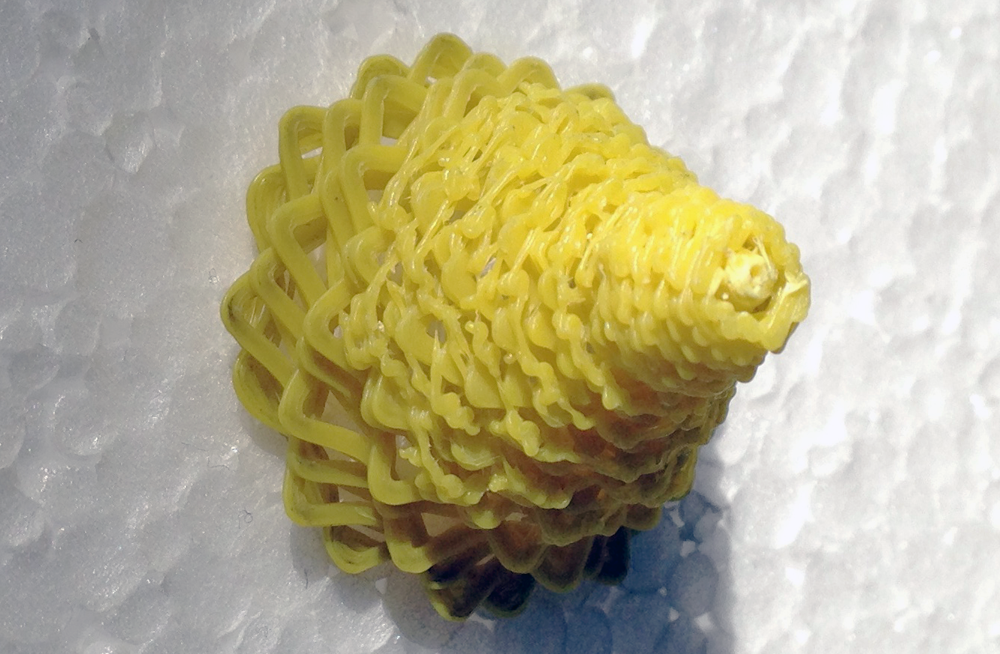If you thought that Barilla’s announced project to develop a 3D printed pasta in collaboration with Dutch non-profit company TNO was just a media stunt, then you might have to think again. As is often the case with 3D printing, there may be no such things as media stunts and the Barilla initiative is taking form through the PrintEat contest the company organized with co-creativity start-up Thingarage. The three winning designs – titled Rosa Pasta, Lune and Vortipa – look very… appetizing.

In this case, the creative contest was carried on by Thingarage on indications from Barilla, a world leader in the production of pasta. For about two months, more than 530 national and international product designers submitted their entries, aiming to revolutionize the concept of the pasta, at least in the forms in which we are used to.
The designers hailed from more than 20 countries – including especially Italy, the USA, Netherlands, France ,and Germany – and were called to a creative effort aimed at subverting the traditional patterns of production (drawing and molds), designing forms that can be made only through 3D printing, such as hollow figures and intricate geometries.
In all, 216 projects were submitted, which were evaluated by a team of experts to assess their feasibility and originality. In the case of “Rosa Pasta”, Loris Tupin, a French industrial designer from Maxilly sur Léman, presented the biodynamic model of a flower that, from a bud, changes into a rose during cooking; For “Vortipa”, Danilo Spiga and Luis Fraguarda, a team of product designers from Cagliari, designed a new concept of pasta based on the morphology of a vortex that, upside down, recalls the shape of a Christmas tree.
“Lune” by Alessandro Carbine, an Italian product designer from Studio Abaco in Paris, brought a 3D model of a moon with its craters created to improve the interaction between the pasta and the sauce that it is served with. For these designers, Thingarage provided three cash awards for a total of €2,400, plus the possibility to tell their story on the site’s blog portal.
“We are thrilled by the enthusiasm with which our contest has been welcomed by the community of designers, many of whom had never been put to the test with the challenges of the Food Design,” said Michael Petronio, Vice President of Research and Development Department of the Barilla Group. “There are still many steps to take in this project, but, whatever the future of pasta, Barilla will be there!”
“Making a product with the most advanced manufacturing techniques and digital 3D printing,” added Antonello Balestrieri, CEO of Thingarage, “means pushing the limits of industrial production in an intelligent way. I’m really excited about the results of this creative effort: our community of designers interpreted this ambitious challenge in the best possible way. These innovative projects will pave the way for a new type of production and sustainable consumption. I believe the field of Food Design is the one that can most benefit from the vast potential of crowdsourcing, letting users directly decide how to customize what they eat.”
When Barilla had initially announced the idea of 3D printed pasta, all I asked myself was how much sense it would make to 3D print a single piece at a time, while pasta can so easily be produced in the traditional way. Answering that questions is exactly what designers are for and Thingarage has proved this once again, helping us discover new possibilities and thinking in an alternative way.
The idea of a pasta that changes shape during cooking, or a hollow pasta that fills with sauce, are logical and sensible ideas that exploit the potential of new technologies to offer something new and desirable, renewing even a product that is among the most traditional that exist. This does not mean that the pasta will no longer be mass produced, but only that, in the future, we will also have these possibilities to hunger for.






